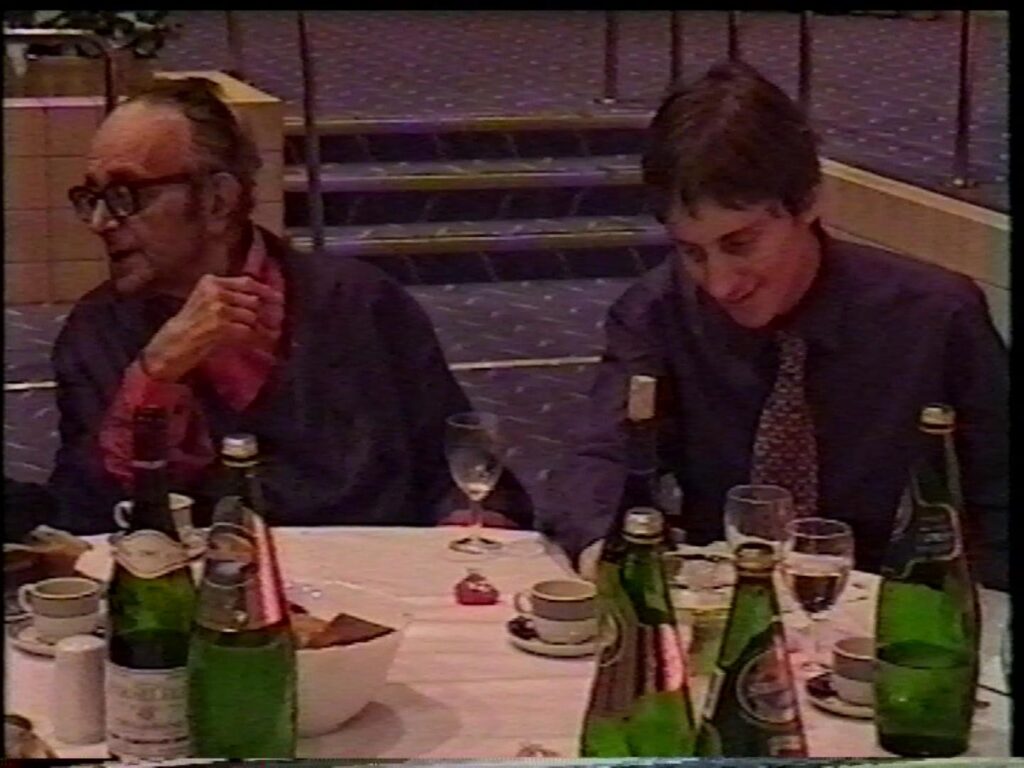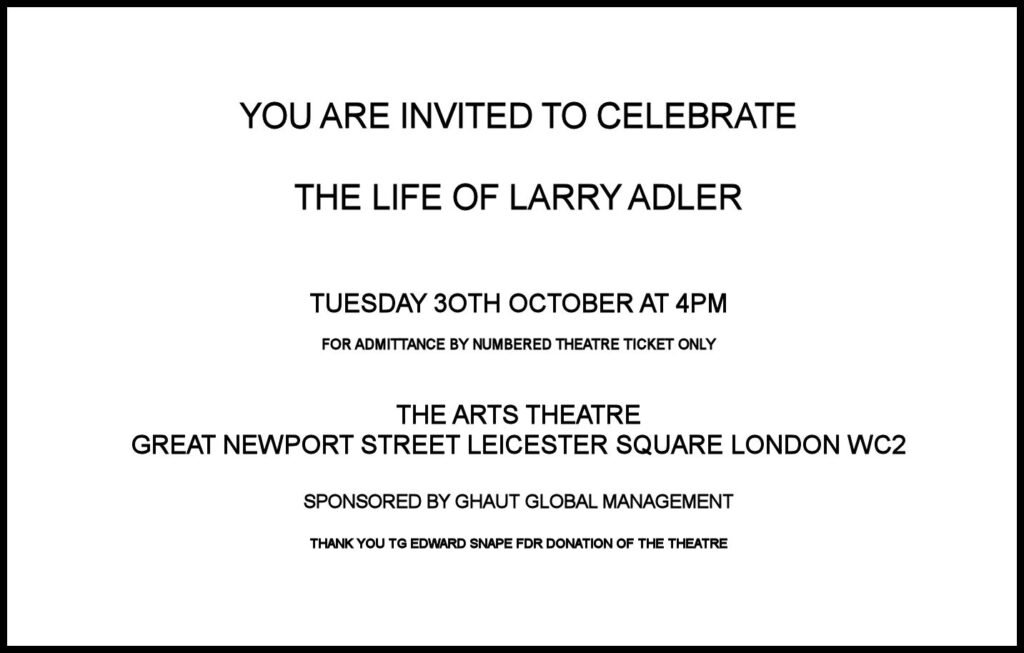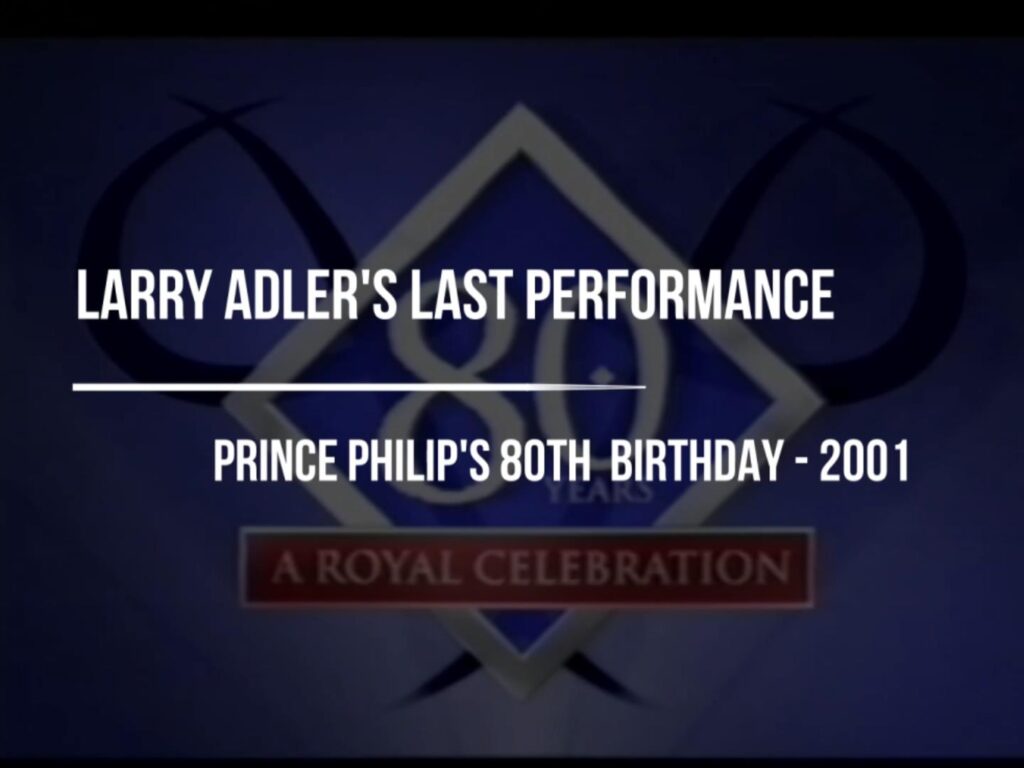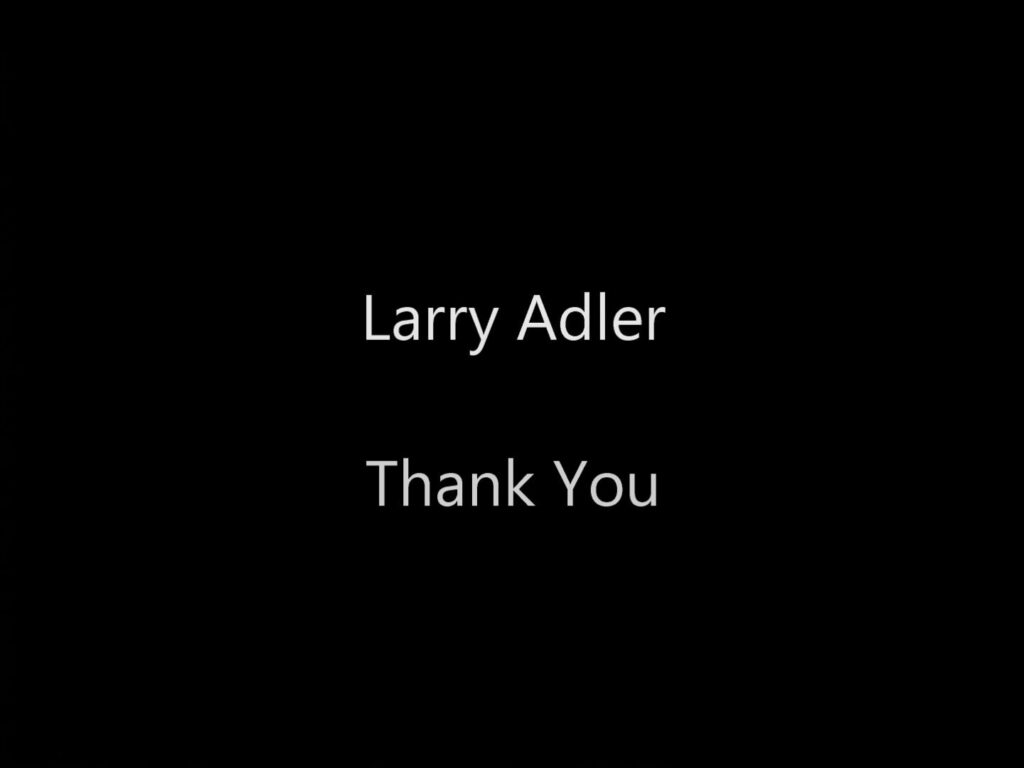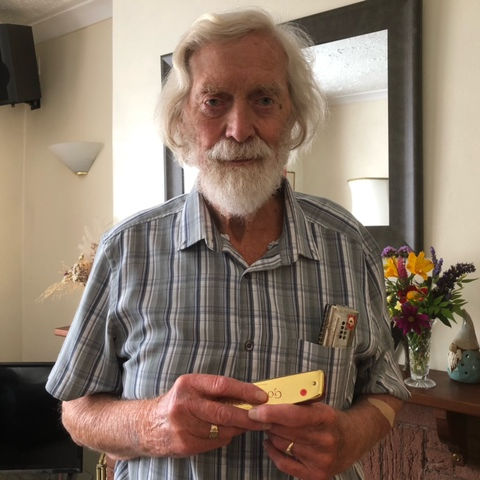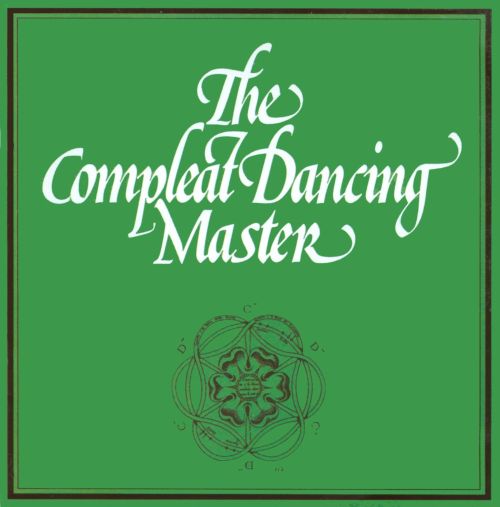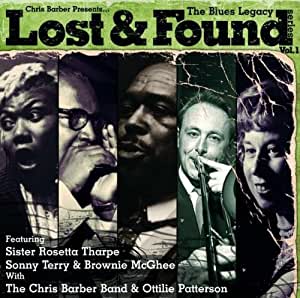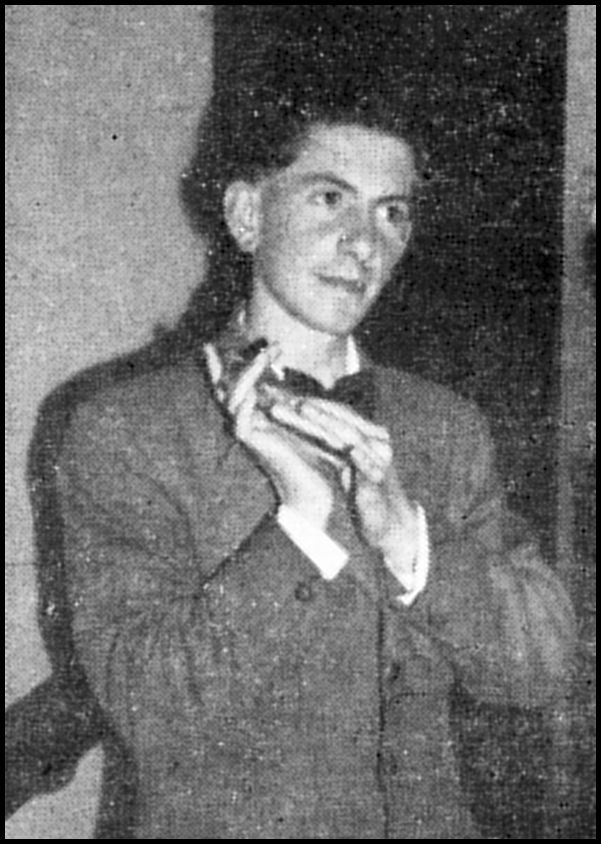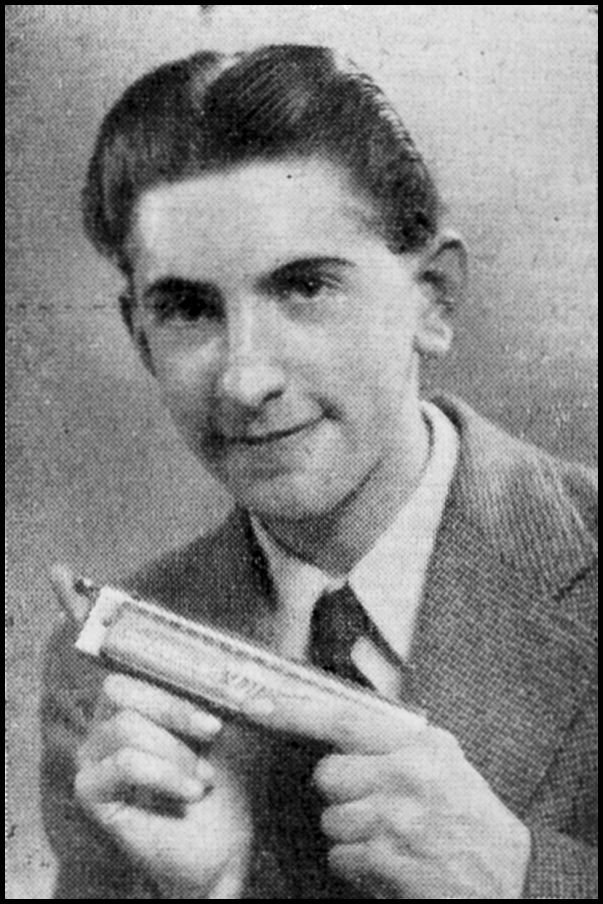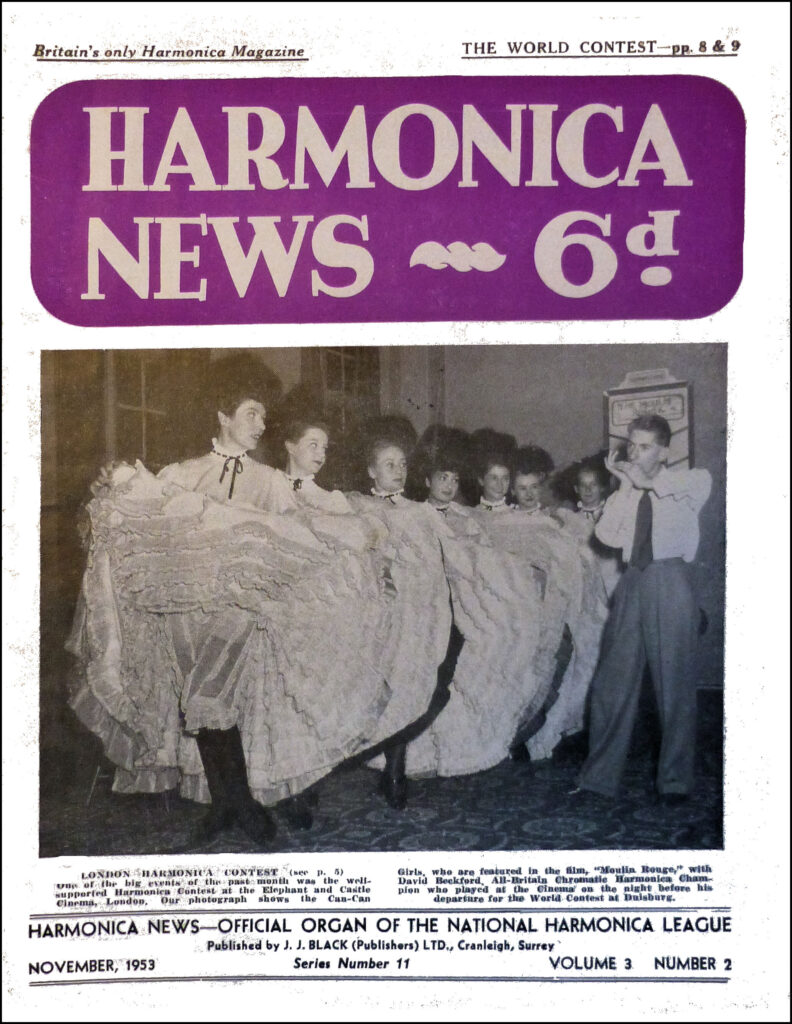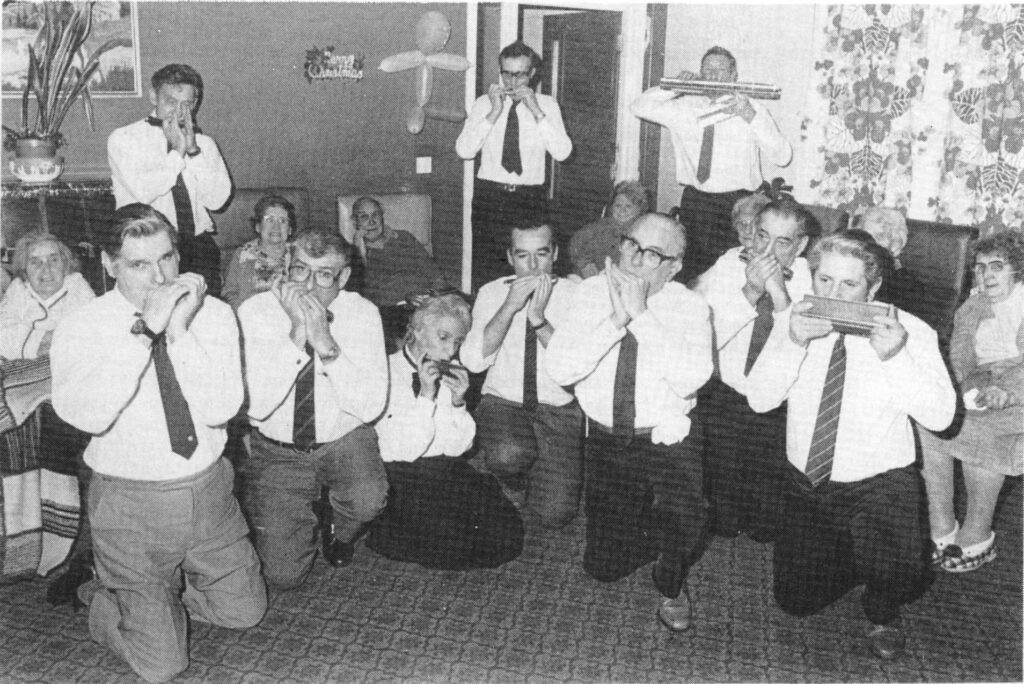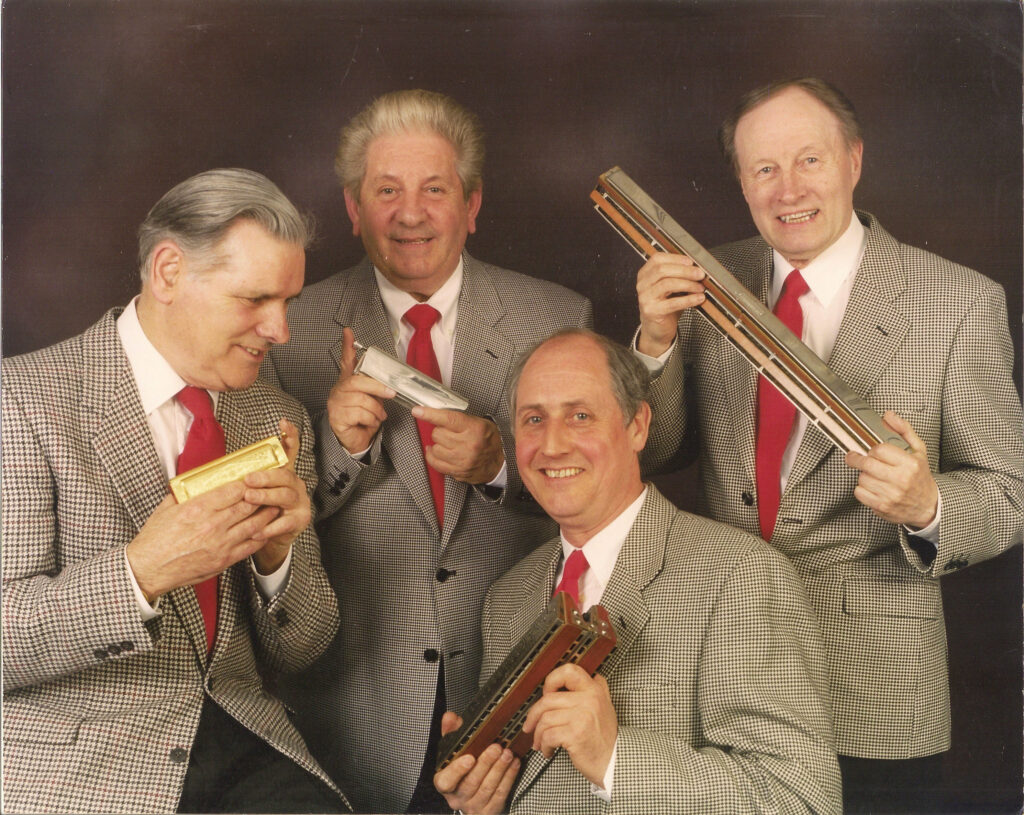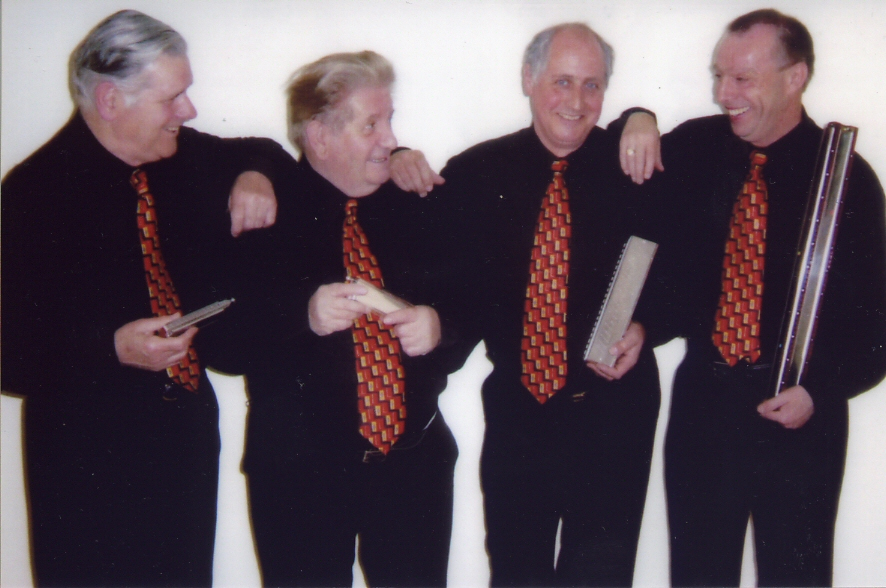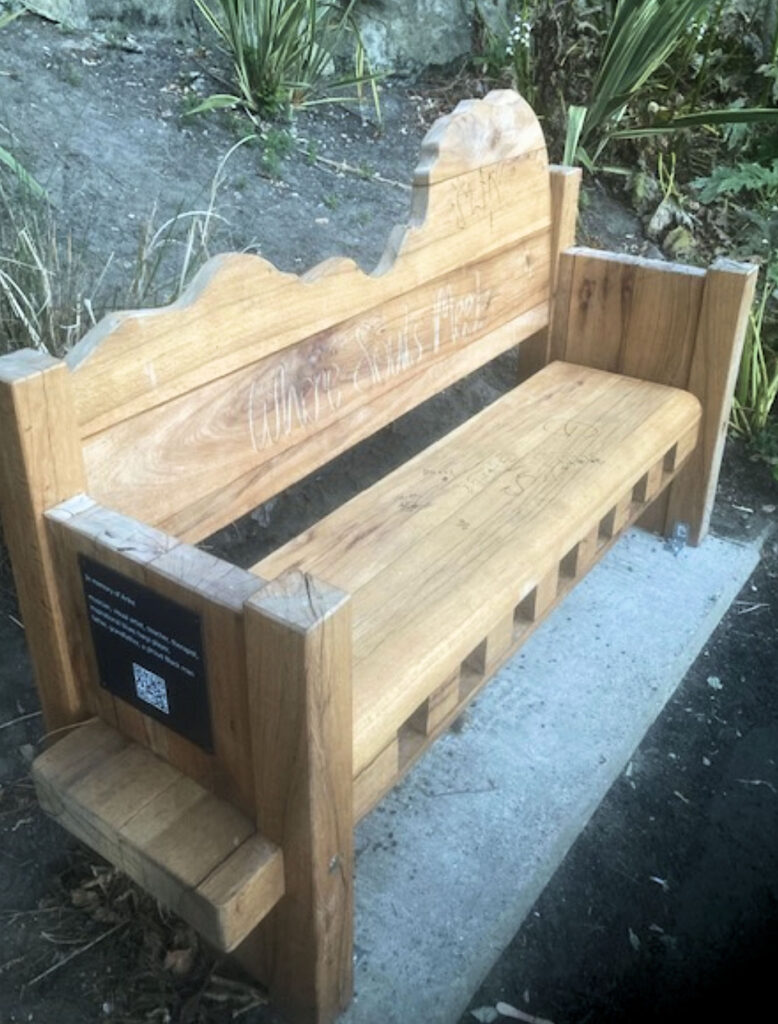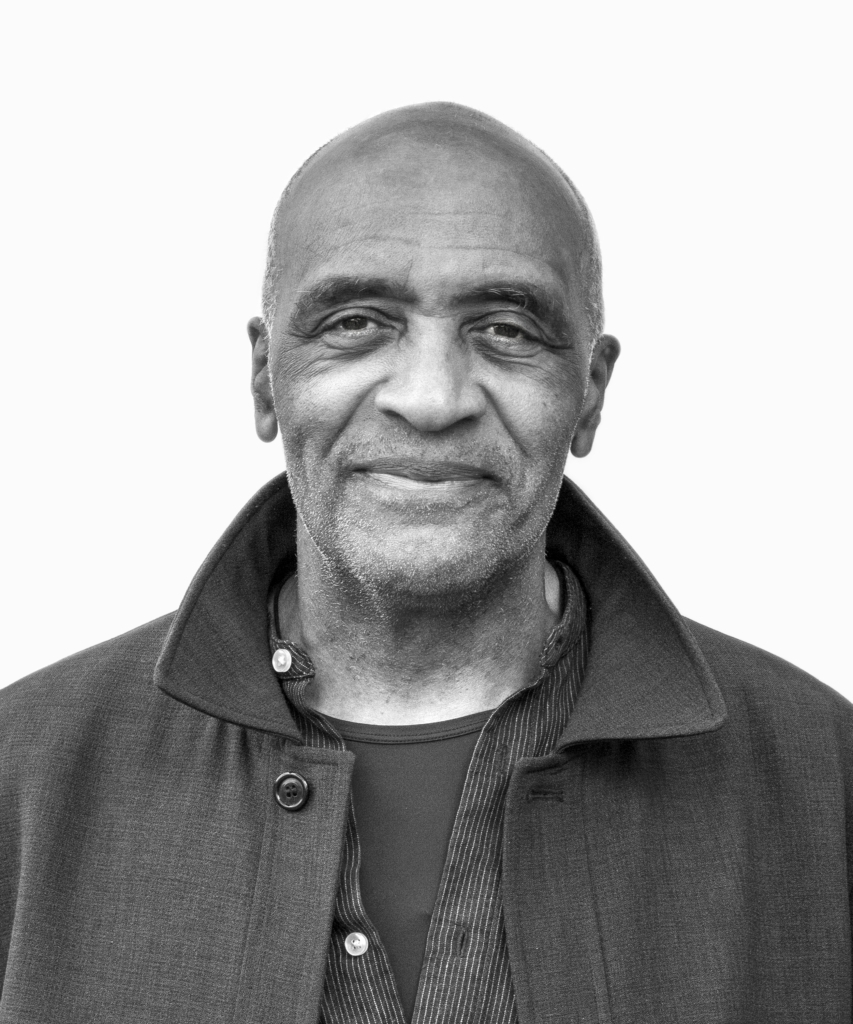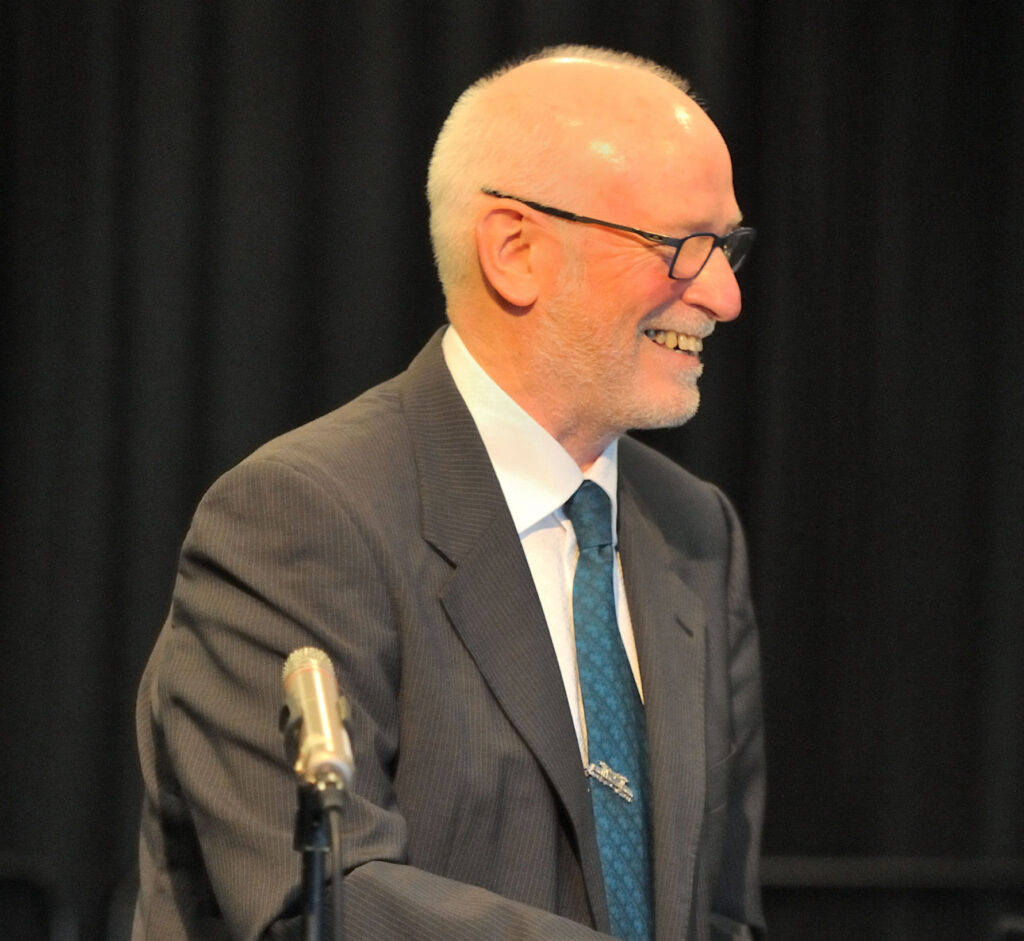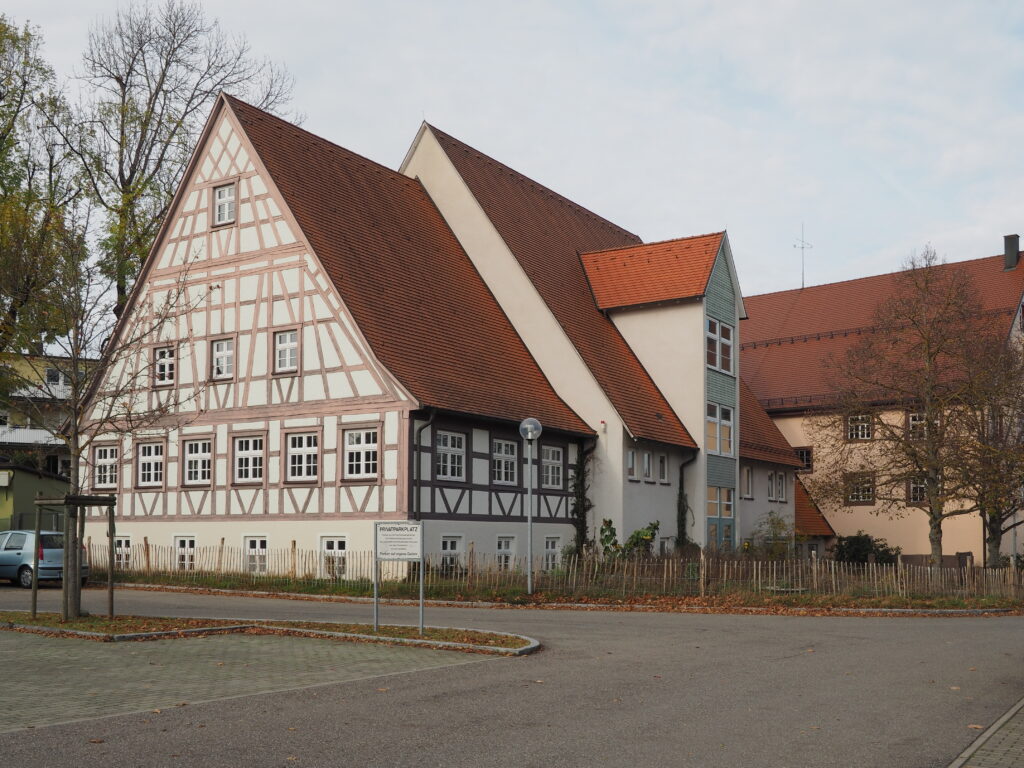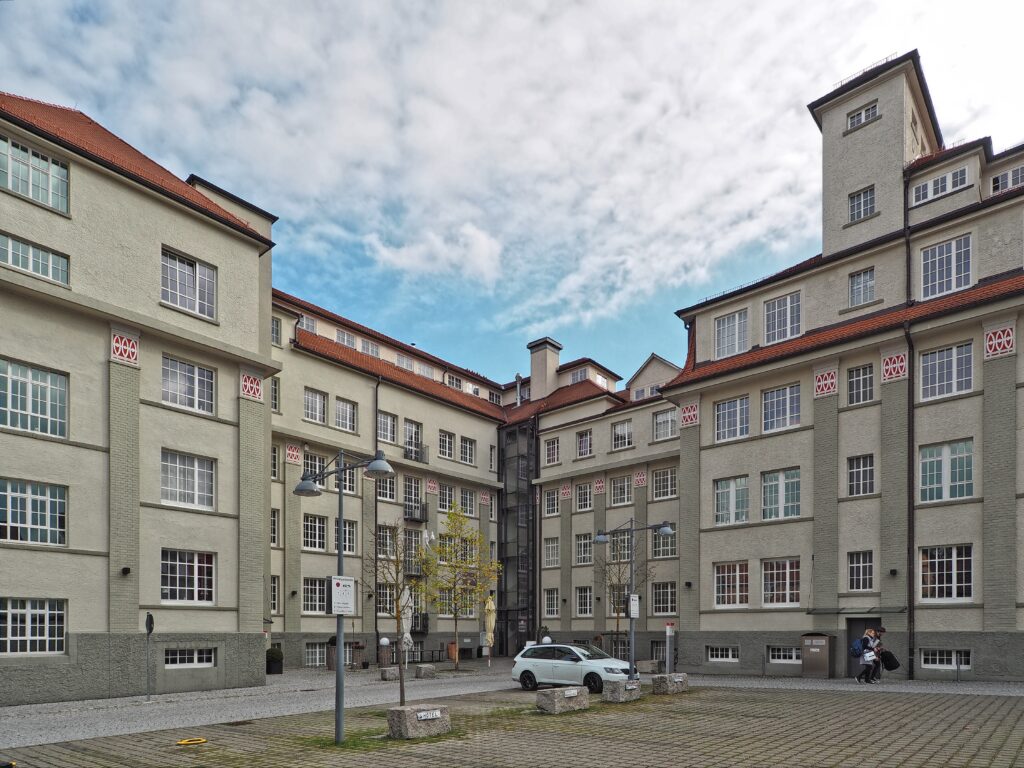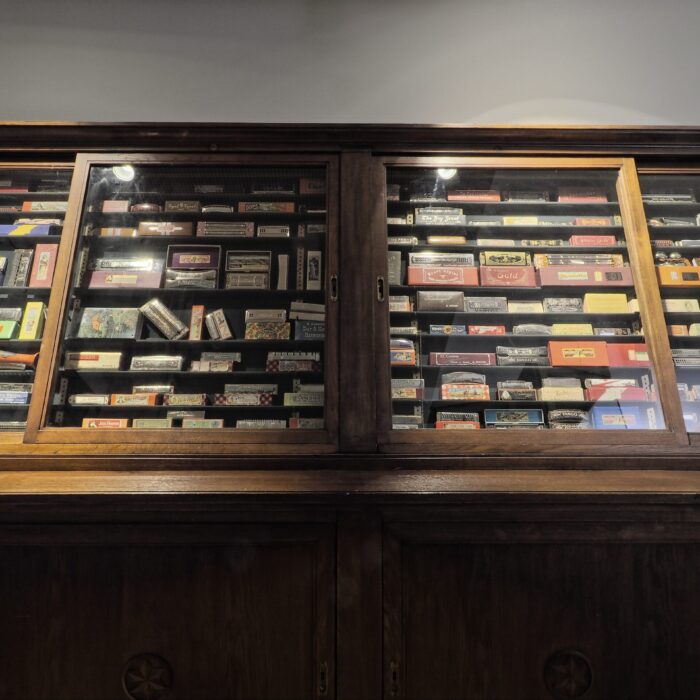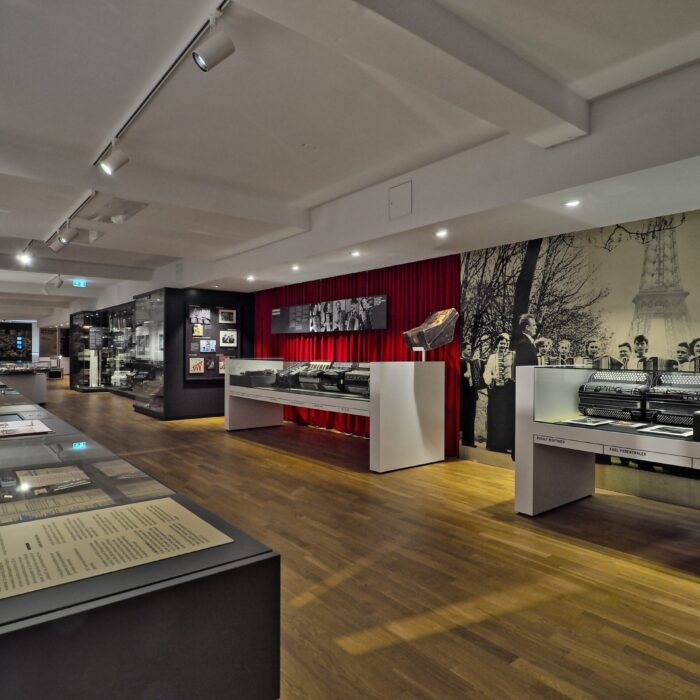Gerry Ezard as a friend and organiser
A personal tribute from Roger Trobridge – former Chairman of HarmonicaUK.
Gerry was living in London as a child and studied accordion at the Hohner run, “British College of Accordionists“. He preferred harmonica and ended up being very successful in the National Harmonica League (NHL) UK Championships in the 1950s.
This led to him being asked to join the Morton Fraser Harmonica Gang, a professional variety act. Gerry decided it was not what he wanted and after his National Service he established a business in his beloved Wales.
It was a big success and when he retired, he left it to his family and returned to the harmonica.
This was about the time I took over as Chairman of the National Harmonica League (now HarmonicaUK) in October 2000. We met up through the forum on my website and he immediately joined the committee, where his business and musical experience was invaluable.
Gerry was very involved with the transfer of the annual festival to the Folk House in Bristol in 2001.Ben Hewlett was teaching a blues class for musicians there and he thought it would be a great venue.
He took a back seat around 2010 but continued to support the Chromatic Weekend festival which he had set up in 2006.
Gerry had other interests and he became leader of the Mid Glamorgan Accordion Band, still playing his chromatic harmonica. He also enjoyed writing and the research that went into it. When we met up earlier this year he was about to visit Scotland to check out the background for his latest novel.
You can learn out more from Gerry himself in this 60 mins video based on a talk he gave to the Porthcawl U3A about his life as a harmonica player entitled “Remember when you got your first harmonica“.
Gerry Ezard, performer, musician and author
Gerry has recorded two CDS, (“Just My Stuff” and “More of My Stuff”) and is also an author (Gerald Ezard) of a self produced book, “Mar$”, available through Amazon.
When Gerry performed on stage he would always dress for the occasion. It was part of the performance. His playing was of the highest standard, something he tried to pass on to anyone wishing to learn. From the time he joined the NHL in 2001, he ran workshops on all aspects of playing the chromatic harmonica. In 2006 he set up the Chromatic Weekend Festival, in Birmingham, along with Steve Dooley, which resulted in an increased awareness and uptake of the chromatic harmonica.
Gerry was always happy on stage and would always have something to say. As the following examples will show, he loved to act out stories, often in the style of the characters from the stories of Mickey Spillane and Damon Runyon – gumshoes, gangsters and gamblers. Like Larry Adler – no opportunity was missed to make it a better story.
Bach in the Bar
with apologies to
Mickey Spilane
Harmonica World
Dec-Jan 2005
It was quiet, too quiet, when I crossed the reception at Jurys. The blond behind the desk wasn’t giving anything away through those baby blue peepers.
The lights were low and the noise of the gang drowned out the background music when I hit the bar. Wheels sat in his usual place eyeing the crowd, Babs, his doll, glanced up as I sashayed in hoping they wouldn’t notice the bulge of cold metal under my armpit.
I knew something was going down, but as long as it wasn’t me in a cement overcoat I was too tired to
care. I flung myself into a chair in the shadows. They were all there – Babyface Jamie, Fast Eddie, and
Fingers Lee and his Ma, Lady C.
Lady C slid the paper over to Wheels and his eyes narrowed as he glanced it over. ‘Hey Jamie, you handle this stuff?’ he breathed. Babyface sidled over, casual like, and the bar went silent as he slowly pulled out a silver 48. Yeah, “Wheels”, he nodded, ‘I can fix it’. Everyone’s hands were in the open, I kept mine there too, and smiled like I knew too much.
Wheels raked the room with his eyes, nobody looked up, ‘Any of youse guys ready to roll’ he queried. The question hung in the air like a harmonic minor. The dame nodded ‘I’m in’ she drawled, ‘Me too’ added Fast Eddie, both producing mean looking 48s.
I shrunk into the shadows but it was too late, Wheels fixed me with his eyes. A long moment passed, ‘You’re in Pops’, he announced, and I knew there was no backing out. I was glad I’d packed my big 56 because this little number was going to be a doozy.
Then Fingers began to tinkle the ivories and Wheels began to play. Lady C narrowed her eyes and joined in with Babyface alongside. Me, I was with Fast Eddie, and we all watched each other to see what went down.
Well it went something like that after the festival concert, when, at 1am in Jurys lounge, five chromatic players. Carol Axford, Gerry Ezard, Jamie Dolan, Eddie Ong and Douglas Tate played Bach’s Double Violin Concerto, with Lee Axford at the piano. The bar was still crowded with hotel guests, and there were a few surprised looks as the elegant music silenced the conversation.
It was one of those magic moments, and Douglas, with his wife Barbara at his side, had somehow managed to raise us all from our post festival day stupor to enjoy playing Bach in the early hours of the morning.
I’m glad I was there. We will remember Douglas by playing this again one day.
Gerry (Pops) Ezard
Repeat performance at Douglas Tate’s Memorial Service (21 April 2006)
Here is a video of a repeat performance of the music that was played in the bar at Jurys Hotel in Bristol, on that Saturday night. Again Gerry Ezard is the narrator and a performer alongside Colin Mort, Philip Achille, Eddie Ong and Jamie Dolan. The 9 mins recording is taken from Douglas Tate’s Memorial service in Olney Parish Church, which added its own reverb to the chromatic harmonicas.
Gerry Ezard in Concert
Gerry played in many NHL/HarmonicaUK concerts and Chromatic Weekends. He loved the film music and Light Music of his youth. Here he plays two arrangements by Tommy Reilly from the Festival Concert in 2011 and also demonstrates his sartorial elegance.
Tribute from HarmonicaUK
It was with sadness and heavy hearts that we learned of Gerry’s passing. Everyone who had the pleasure of meeting him will miss him greatly.
Gerry played a major role in rebuilding HarmonicaUK and the teaching and promotion of his beloved chromatic harmonica.
A professional performer on stage – off stage he was warm and generous with an impish sense of humour.
The Gerry Ezard Royal National Lifeboat Institution (RNLI) Tribute Fund
There is a Gerry Ezard – Forever By the Sea Tribute Fund page for donations. Gerry was an avid Royal National Lifeboat Institution (RNLI) supporter. He loved life aboard his boat. Our first meeting was through a link to his Moonraker boat club.


